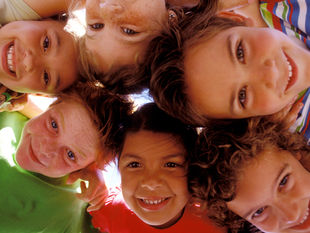
Dunvegan Nursery School
- LET THE LEARNING BEGIN -

Helping Kids Handle Big Feelings: A Friendly Guide for Parents
Feb 18
2 min read
0
1
0

Little kids have big emotions! From excitement to frustration, they feel everything intensely—and that’s totally normal. Their brains are still learning how to manage emotions, so meltdowns happen. The good news? You can help them navigate these feelings with love and patience.
Why Do Kids Have Big Feelings?
Young children’s brains are still developing, especially the part that controls impulses and emotions. That’s why they often struggle to express frustration, sadness, or anger in calm ways. According to experts, tantrums are common for kids between 1 and 4 years old, as they figure out how to handle their emotions.
Simple Ways to Help Kids Regulate Emotions
1. Validate Their Feelings
Instead of saying, “You’re fine,” try: “I see you’re upset. That must be hard.” Feeling understood helps kids calm down.
2. Give Their Feelings a Name
Help them label emotions: “It looks like you’re frustrated because you can’t have another cookie.” This builds emotional awareness.
3. Model Calm Reactions
Kids learn by watching you! Show how to handle frustration with deep breaths or counting to ten.
4. Create a Cozy Calm-Down Spot
A comfy corner with pillows, stuffed animals, and stress balls gives them a safe space to cool off.
5. Teach Coping Tools
Try simple tricks like:
Deep Breathing: Pretend to blow up a balloon.
Counting: Count to five or ten together.
Feelings Charts: Let them point to an emotion.
Movement: Jumping or stretching helps release energy.
6. Give Choices
Offering small choices helps kids feel in control. Instead of saying, “Put on your shoes,” try, “Do you want to wear the red shoes or blue ones?”
7. Set Clear Limits
Emotions are okay, but hitting isn’t. Try: “It’s okay to be mad, but we don’t hit. Let’s find another way to show how you feel.”
8. Use Play and Art for Expression
Drawing, storytelling, or acting out emotions with dolls helps kids process feelings in a fun way.
9. Stick to a Routine
Predictable schedules help kids feel secure, which can reduce emotional outbursts.
10. Be Patient and Kind
Emotional regulation takes practice! Instead of frustration, ask yourself: What does my child need right now? Often, it’s connection and understanding.
Why This Matters
Helping kids handle emotions now sets them up for future success. Research shows that children with strong emotional skills do better in school, have healthier relationships, and manage stress better as they grow.
By using these simple strategies, you’re giving your child the tools they need to navigate their emotions in a positive way. If this guide was helpful, share it with other parents—because every child deserves support to thrive!





